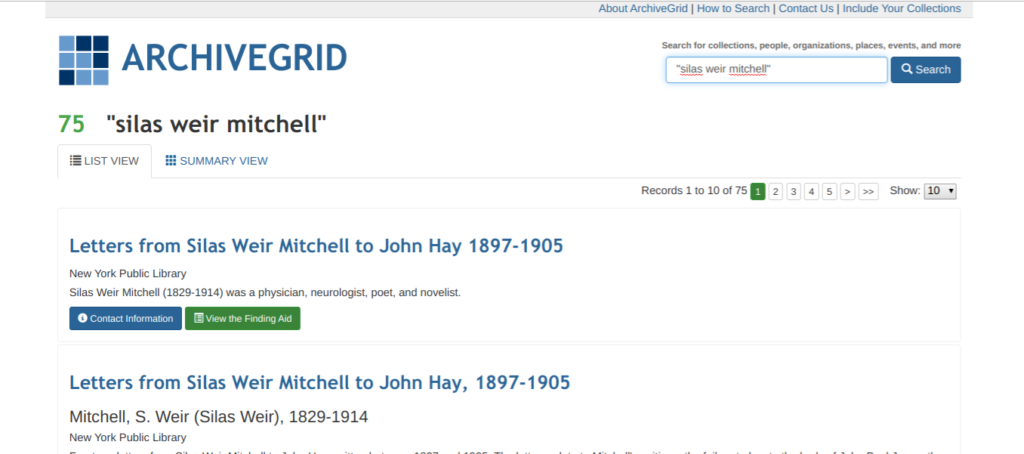– by Morgan Rafel, Archives intern
If Isaac Newton could discover calculus while social distancing during the Great Plague of London, what could I accomplish while social distancing and working from home during the COVID-19 outbreak? I may not have discovered the next form of math, but I did accomplish quite a bit!
The first task I completed was crafting 5 tweets that promote the Library’s materials that were digitized as part of the “For the Health of the New Nation” grant. I came up with the idea that because the College is closed due to the COVID-19 pandemic, I could focus on the materials that included the topic of hygiene. Luckily, I was able to find a few lecture notes that focused solely on hygiene! In creating the tweets, I tried to tie them into the COVID-19 outbreak, reminding people that health comes first, fevers are good, and to wash your hands. You can view the tweets on the Library’s Twitter account @CPPHistMedLib here.
For the next few days we’re highlighting 18th &19th c hygiene practices from lecture notes, digitized as part of @CLIRHC @PACSCL #FHNN grant: https://t.co/kYh8kx80xd #publichealth #histmed pic.twitter.com/pzIXW5uMdG
— CPP HistMedLibrary (@CPPHistMedLib) April 8, 2020
The second task I completed was an exercise where I created a list of basic required metadata for born-digital College records. To do this I reflected on what sort of metadata we use for physical records then created a list that included similarities and differences between what we might use for born-digital records. Some metadata that would be the same between the two are: the basic information, such as the title of the collection and the identifier of the collection (the call number); and the finding aid data which includes the finding aid location (URL), the finding aid title, and the date the finding aid was created.
In the list, there are a few pieces of metadata that could be different, but the one that I thought was the biggest difference was the fact that we possibly wouldn’t need to include a historical note. My reasoning for this is as follows, which I pulled directly from the list: “I don’t think we need a historical note, unless in the future it might be needed in the case that the program that originally housed the born-digital material is defunct (ex. Adobe Flash)”.
Before the COVID outbreak, I was working on digitizing volumes of medical lecture notes. The second task was given to me to get me to start thinking about born-digital records because if we hadn’t closed, I would have been able to review born-digital records more in depth in person and get a glimpse of the College’s Digital Archives Management System (DAMS). While I’m not sure that I want to narrow my field of work down to only work with born-digital materials I know that looking at the DAMS would have been a valuable skill-building activity that I’m saddened not to have had.
The third task I’m working on was the original task I was given when I began working from home. I had to identify related collections held by other institutions and link them in our current finding aids; a tedious and sometimes difficult task. Using ArchiveGrid, “a collection of over four million archival material descriptions, including MARC records from WorldCat and finding aids harvested from the web”, I searched for a list of the big names in our archive. These names included Silas Weir Mitchell, Benjamin Rush, Katharine Sturgis, and Joseph Leidy. Even though this was a tedious task, I really enjoyed seeing other institutions’ related collections. Having these links in our finding aids also helps researchers because they don’t have to spend extra time going through ArchiveGrid and WorldCat, they can just focus on researching. I think that it gives researchers greater access; if they can’t find something here, another repository is sure to have the information they’re looking for.
Working from home was an interesting experience, but I absolutely wouldn’t trade it for being able to work with the collections in person; that was the biggest thing I struggled with. I hated not being able to work with the collections directly. I was having a lot of fun scanning the medical lecture volumes before the outbreak because I could sit by myself in the quiet, catch up on podcasts, and skim the books as I scanned them into the computer.
Another thing that I wasn’t able to do because of the outbreak was to go to the Delaware Valley Archivists Group meeting. I had five goals that I set up at the beginning of my internship, and going to this meeting was one of them. Instead, I was included in a meeting about planning for a multi-institutional digitization grant. I was really upset that I couldn’t attend the original planned meeting because I was looking forward to starting to network with people in the archival community. While I did end up learning a bit about the process of planning a grant, I wasn’t able to talk to the people who were attending the meeting about who they were and what they did in the archival field, I just saw names and faces on a screen.
Even though COVID-19 threw a wrench in how I was able to complete my internship, I was still able to complete a few projects and gain valuable knowledge about what it’s like to intern for an archive from home!
Source consulted:
Dooley, Jackie. “The Archival Advantage: Integrating Archival Expertise into Management of Born-digital Library Materials.” OCLC Research, 2015. http://www.oclc.org/content/dam/research/publications/2015/oclcresearch-archival-advantage-2015.pdf.

